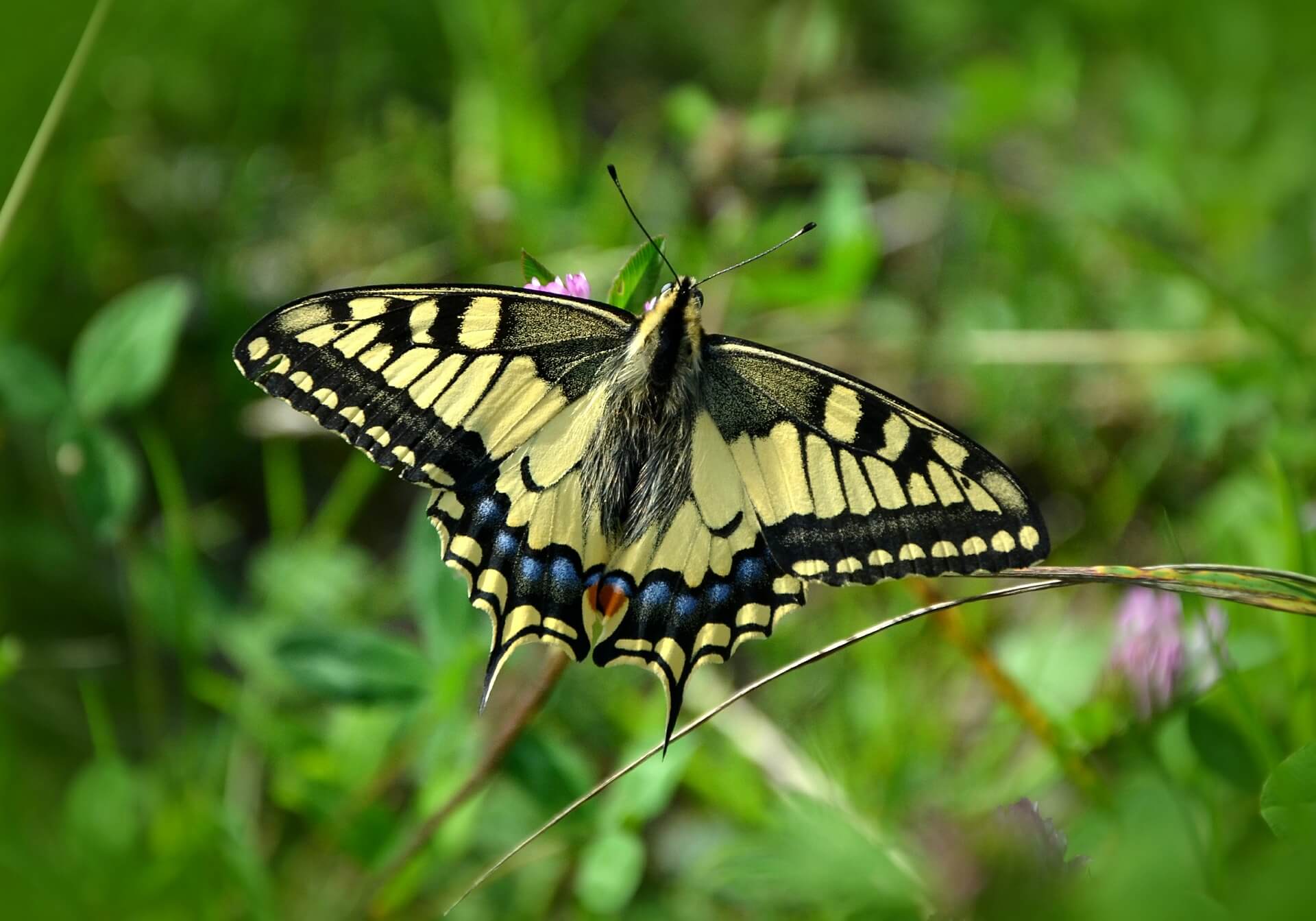Swallowtails and birdwings are just two of the common names attributed to members of the butterfly family Papilionidae. “Swallowtail” is also used rather loosely to describe the entire family.
The full range of common names includes apollos (Parnassius), festoons (Allancastria and Zerynthia), gorgons (Meandrusa), kites (Eurytides), dragontails (Lamproptera) swordtails and jays (Graphium), windmills and clubtails (Atrophaneura), birdwings (Trogonoptera, Troides, Ornithoptera) and swallowtails and fluted swallowtails (Papilio)..
In many species the hindwings are extended into tails, superficially resembling the long tails of swallows, hence the popular name. Surprisingly, the precise function of the tails has never been examined and it is not clear whether they assist flight or have some other purpose.
These butterflies include some of the most spectacular and magnificent of all. When compared with other insects, all the swallowtails have large wings, ranging from the dainty, 50 mm wingspan of the dragontails of India and Malaysia (Lamproptera species), to the giant birdwings (Trogonoptera, Troides, Ornithoptera) of Indonesia and New Guinea. The female Queen Alexandra’s Birdwing (Ornithoptera alexandrae) is the largest butterfly in the world, attaining a wingspan of 300 mm. Because of their large wings, many swallowtails are powerful fliers, the apollos being an exception with their rather feeble flight.
The colours and patterns of swallowtails are astonishingly rich and diverse. They range from sombre black or brown (e.g. Papilio acheron, Troides dohertyi) to the lustrous sheen of the gloss swallowtails (e.g. Papilio chikae). Some of the birdwings are iridescent and highly changeable in colour; Troides prattorum can appear golden-orange, green, pale blue or pink from different angles of view.
